Brought to you by Whited Sepulchre Records and presenting sponsors CULT and Durham Studios, Talk Low is a four day music festival creating unique contexts for deep listening from artists from all over the world and a variety of musical styles ranging from ambient, experimental, avant-garde jazz and indie rock and house.
A deep tapestry of shared sound exploration
I was only just starting to salivate over the lineup for next years Big Ears Festival and wondering how I can pull off attending, when lo and behold, I got word of the Talk Low Experimental Music Festival happening in my very own city in just a few weeks. With short notice, I already had some obligations in place for a few of the evenings of musical conviviality, so I only attended two of the five nights of activities and concerts. If it happens again, and I really, really hope it happens again next year, I really, really, want to plan to block out the entire time to participate in as much as I can. It was so regenerative to hear such wonderful music on the one hand and to meet and talk with people, see old friends and meet new ones. To hear local Cincinnati talents, and regional talents from Indiana and Tennessee showcased on music bills with national and international artists, just blocks away from my own house, in my own neighborhood was very special indeed.
The organizer, Ryan Hall of Whited Sepulchre Records and his intrepid crew must have put in a ton of work to pull this festival together. There has been plenty of experimental music brought to Cincinnati by DIY organizers and it is important to continue to champion their efforts. Talk Low shared the DIY spirit that makes underground culture so exciting, but they also expanded their reach by tapping into arts grants and community sponsors. This allowed Talk Low to go beyond one or two evenings at one venue, with one or two headliners, to multiple headliners, at multiple venues, on multiple nights, interspersed with a talk, a documentary, and an ambient jam where everyone could bring their own instrument and drone out together for two hours. Just the two nights I was able to attend was a tour de force, so I can only imagine and rely on reports of those who got to experience it in full. We’ll start with the nights I was able to participate in the revelry.

Deep Listening ::
The first night I was able to attend was the second day of the fest and started off with an IRiS Alloy talk on Deep Listening before the show. IRiS Alloy is a discussion series started by the Institute for Research in Sensing, an academic think tank “focused on novel routes to innovation in sensing research and sensor technology development” with a holistic and interdisciplinary approach. The talk was moderated by Dr. Nathan Morehouse who is interested in things like the visual and behavioral ecology of butterflies and jumping spiders and relationships between the arts and the sciences. He was joined by local modular synthesist Fritz Pape, flautist, teacher and deep listener Julianna Eidle, sound artist, composer, teacher and deep listener Owen Hopper, Mack Hagood who is a professor in the field of media and communications at Miami University and the author of Hush: Media and Sonic Self Control. The panel was rounded off with pianist Brianna Matzke, current executive director of concert:nova that brings contemporary classical music to life in Cincinnati. Both Eidle and Hopper had gone through the Deep Listening training offered by the Center for Deep Listening in association with the Renssalear Polytechnic Institute, and are currently doing periodic workshops on those techniques here in Cincinnati. I had no idea! It is so wonderful that people are continuing to spread the work and ideas of Pauline Oliveros out into the world.
For those who don’t know, Deep Listening is a philosophy and practice developed by the late Pauline Oliveros, experimental musician and accordionist extraordinaire. According to the Deep Listening Institute which carries on her work, “Deep Listening…explores the difference between the involuntary nature of hearing and the conscious nature of listening. The practice includes bodywork, sonic meditations, and interactive performance, as well as listening to the sounds of daily life, nature, one’s own thoughts, imagination, and dreams. It cultivates a heightened awareness of the sonic environment, both external and internal, and promotes experimentation, improvisation, collaboration, playfulness, and other creative skills vital to personal and community growth.”
The spirit of Oliveros seemed to hanging around and infusing the entire festival. Eidle and Hopper who had been through Deep Listening training both said it transformed their lives. Meanwhile, Matzke, who is also artistic director of Cincinnati’s Response Project, had done work organizing responses to the 25 Sonic Meditations by Oliveros, just a few years before, and had also said she recently performed an Oliveros composition (I didn’t catch which one). The Saturday night performance from Maria Chavez also brought forth the spirit of Oliveros. Chavez had been a close friend and student of her and mentioned her example in the talk she gave before she took to the turntables.
In this context the assembled speakers engaged in a lively conversation on listening, noise, silence, sound pollution, composition, dreams, and the role of hearing in our everyday lives. Audience participation was encouraged and I was happy to jump in. In talking about the role of silence in composition, JayVe Montgomery (who later performed as part of Sunday evenings program), pointed out how we should also be wary of silence. He mentioned the sound ecology work of R. Murray Schaeffer and how many of the sounds from our natural world are disappearing as it is encroached by noise. Another attendee mentioned the way our inner lives have become colonized by the corporate world, an inner form of noise pollution that clouds the way we are able to listen to our own inner voices and the voices of ancestors. The round table format, and the fact that the panel wasn’t sitting up on a platform, made anyone who is in the audience feel like they could join in, and many of us did. This kind of mental stimulation was the perfect prequel for the nights music, and it wasn’t long after the discussion that we headed out of DSGN CLLCTV’s front gallery space, and into the back where things got wild.
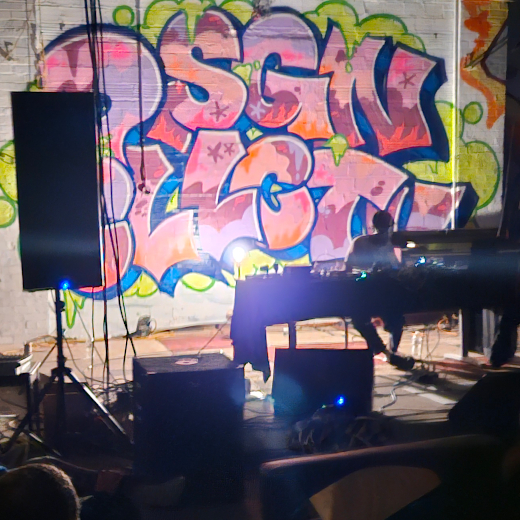
Five Pointed Stars / Desert Liminal / KMRU ::
With ideas of noise, silence, sound ecology, and listening to the sounds coming from our imaginations percolating inside me, I stepped into the backroom just in time to see the first music act of the night, Cincinnati locals Five Pointed Stars doing their first gig. All are polished musicians playing in different combos, but this was their first live outing in this project. May it continue!
Band member Nina Payiatis, who works for Ryan Hall at Whited Sepulchre, was busy on the other nights of the festival selling T-shirts and tapes at the merch tables, but was just as comfortable, and natural as a musician, on stage. Julian Vanasse has a radio background extending to his days at WNYU where he did some engineering, programming and studio maintenance. Interestingly, Vanasse has been working with neural audio encoding and signal processing in the realm of generative musical algorithms. Payiatis and Vanasse are both involved neck deep at Cincinnati’s premier non-commercial community radio station WAIF. Vanasse host’s Rave Between the Lines as DJ X with his sister Zoe, DJ Z, with one serving on the programming committee and another on the board of trustees. Meanwhile Payiatis, in her guise as DJ Dog Bite has been a frequent host of the underground leftfield music program Trash Flow Radio, among others. That is when she isn’t busy sawing the violin in Sophies Dream, or being the frontwoman for The Spoils. Patrick Zopff adds another dimension to the band and releases his own music under the name Pity Xerox. Drummer Eliot Gill rounded out their unit as they delivered a propulsive set of danceable post-indie post-rock. Payiatis bowed the violin on some tracks, guitar or bass on others (I didn’t get the best seat for that one). What I noticed was how comfortable they all were switching off on instruments, and singing together. Keep an eye on these cats!
Desert Liminal from Chicago came on next. They are a shoegazey dreampop trio with solid songwriting and records on Whited Sepulchre, among other labels. What made them standout was the use of violin and guitar, by one member. This gave them a different sonic signature than many other groups mining similar territory. A simple, mostly electronic drum kit sat front and center to keep the motorik beat, with the violinist on one side, and the DX7ist on the other side. It was fun to hear the classic synthpop synthesizer being put to such effective use on songs that traversed a territory of isolationist internet love ballads, ethereal goth, and slowcore. They played a set of three songs from their new album, Black Ocean, that is out this October.
After a brief break and chatting with festival goers outside, I came back in from the humid light rain for KMRU. Listening to KMRU was like being inside a total immersion blender. The room was dark, and there was only one lamp on, behind him, not enough for us to see him, and barely enough for him to see what he was doing, I’d guess. The music was totally fluid and jaw dropping. He presented a totally immersive soundworld that was a real head cleaner, both totally abstract and relatable at once. It was a singular, organic, musical lifeform that had the room throbbing in the low end, including the assembled bodies. It seemed like there were field recordings, but I’m not sure. There was much that could have been the flapping of bird wings, but it could have also been electronics, or insect clicks. Surely there were oscillating machines. Bug zappers and chords of doom resolved into an eventual buoyant dawn. Listener’s who had heard his album Natur (Touch, 2024), found themselves in a similar terrain.
As he tore down after the set, I did spot one module that looked like it was made by Ciat Lonbarde, but I can’t be 100 percent positive on that. The only thing else I can say is how really grateful I was to have the opportunity to see KMRU, who hails from Nairobi and is now based in Berlin, at a venue in Ohio. I walked five blocks from my home to attend this show but was transported far beyond. KMRU’s field recording work was featured in Ben Murphy’s new book, Ears to the Ground: Adventures in Field Recording and Electronic Music, out from Velocity Press.
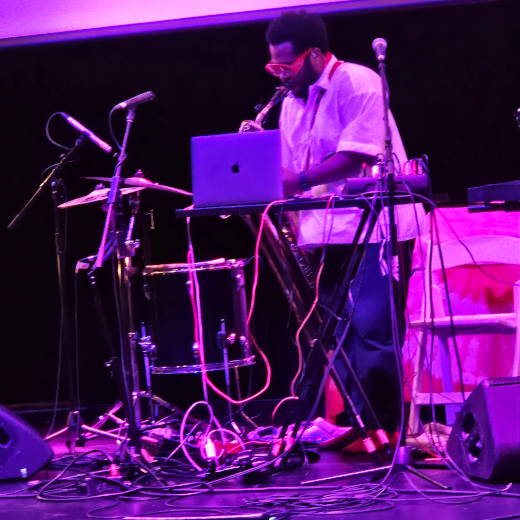
SHERMV / Maria Chavez / Laraaji ::
The spirit of Pauline Oliveros continued to hover over the proceedings of Talk Low on its fourth night, at the concert held at Woodward Theater. It was manifested in different ways by all three of the artists and the collective presence of the attendees ready to have a transcendent listening experience. I trust they weren’t disappointed because it was a truly magical evening.
SHERMVN, another Cincinnati local, showcased the regions talent again with his blast of baritone sax infused ambisonics. SHERMVN radiated a benevolent and positive spirit from his place up on the stage. He had an impressive electronic rig up on stage with him that he possessed with utter alacrity. Spoken word segments mixed in dialogue with soulful vocal samples and washes of sound gritted in granular detail as noise and electricity panned between the towering loudspeakers hanging from the ceiling. Jumping back and forth between different parts of his set-up, SHERMVN was a true one man band, playing on a set of synths, his sax, a laptop, some modules, his pedal array and drums. He set off the ascension that would continue throughout the night.
Maria Chavez came on next and started with a short talk before inviting audience members to come up and break some vinyl records with her. These broken records are intrinsic to her process and she used the in her masterful turntabalist musique concrète performance. It was aleatoric, rhythmic, percussive, and divinatory. Her turntables were used, in my mind, like a divination system. When she dropped the shards of records onto the spinning wheel for the needle to pick up and read, she could have been tossing coins for an I Ching reading, or laying out cards in a tarot spread. While she did have some records she was working with from the back of the decks, much of the other the material came from the records the audience broke, making it a collaborative effort, centered in place. She encouraged the audience to bring up the records and hand them right to her if they felt so inclined.
Chavez spoke of her mentor Pauline Oliveros and told a story of the work Oliveros had done studying dolphins when she had the idea of making a musical instrument for them. Oliveros got to work with dolphins as part of her research and they liked to play with fish. They knew that when they ate the fish the game would be over, so the dolphins liked to wait as long as they could before they took the fish treats offered to them by humans. Chavez tells the story better than I, but she used that to relate to the audience and us breaking records with her and bringing up shards, encouraging us to wait until we couldn’t stand it any longer to bring the vinyl we broke up to her and incorporate into the ongoing audio assemblage. She talked about how her own work with Deep Listening informed her approach to the turntable and was another instance where it felt like the spirit of Oliveros was present for the event, in her students, in the people who’d been touched by her work, in the aether of spirit, sound transmitted from one person to another in unending chains. Afterwards Chavez hung around the stage to sign bits of the broken records for people. I won’t tell you what record I ended up with, but the artist and the title contained a message for me, and I take it to heart.
Laraaji was up next and I never thought I’d get to see him play live. For one thing, even though I love his recordings, seeing him perform hadn’t really been on my radar. In that sense, Talk Low just kept on giving. This festival felt like such an amazing gift that had dropped right into my lap. I was beyond the beyond to be able to have the opportunity to have his sound waves move through my body. Most of the audience was sitting on the floor for a ride over the zither into cosmic ambient realms not long after he took the stage, commanding the audience with what felt like prayerful, ritualistic hand movements as he set the spirit of sound into motion. Crickets, frogs, and the chirp of nightlife were mixed into the flowing strum of echoed and delayed sonic stringdom. Laughter as well. The sound healing innovator Jonathan Goldman once had Laraaji on a podcast to talk about his practice around the yoga of laughter. I grinned wide as Laraaji laughed into the mic. It has been shown that even just putting on a smile can help alter your mood. I can tell you my mood was lifted by the end of the set. Electrical transmissions merged with the vibrating strings, chimes and chants. At one point he was vibrating what I thought to be the vowel sounds, A-E-I-O-U. These seed syllables at the heart of human language have long been used in esoteric circles for their vibratory power (interested parties should check out the book by Joscelyn Godwin called The Mystery of the Vowels for more information).
Hanging out for a bit with the friendly crowd in the afterglow was just as fun. I met another Justin who’d traveled from Colorado to try our chili and take in the festival, and our cities record stores. He told me he was going home with a bunch of vinyl, and we bonded over a shared love of France Gall and French chanson. And I met Evan Miller when I was in que to get my record signed. He host’s of the experimental radio show The Outside airing in Yellow Springs (my old stomping ground in my brief Antioch days and place I still love to visit). Miller has also begun a quarterly experimental music series in Yellow Springs at The Foundry, called The Outside Presents. I’ll be keeping my eyes peeled so I can plan to attend. Walking back to my car in the rain I felt so enriched by all of these experiences.
The parts I missed ::
Insert facepalm emoji. No, really. FOMO in the past participle is real. The kickoff party was one of the things I missed and I heard it was a real corker. Los Angeles based artist Claire Rousay headlined that night with her singular vision of experimental ambiance. Brooklyn based Public Speaking, who works at MoMa for a day job, was also on the bill presenting his electronic avant-pop. Cincinnati post-synth-punks Mary Henry revved up the crowd as the opener with their hardcore electronics. The consolation here is that I can at least hope to check out a Mary Henry show before too long. In the mean time I’ll have to explore the catalog of these other artists.
On late Friday afternoon the Campbient documentary was shown followed by an ambient music set from the Innerspace Collective. Campbient, which I’d sort of heard of somewhere along the way these past few years, “is an annual sound art residency that brings together people for 44 hours to conceptualize, produce, and record 44 minutes of sound art compositions in a state park.” Based out of Washington State, I heard from an Eagle Scout who was in attendance at the Laraaji show, that it looked like the best marriage of electronica and camping possible.
Friday nights music was mostly in the form of DJ’s, with epic house and techno sets that apparently lasted till until the same time the bars were closing. Everyone who attended said it was mad in the best possible way, and the perfect injection of adrenaline needed for revelers midway through the fest. Raw Time, DJ Boywife, and Galcher Lustwerk were the movers and shakers ramping up the energy.
Sunday evening’s activities were hosted at the Contemporary Art Center. From five to seven there was a two-hour ambient jam where people were encouraged to bring their own harmoniums and collectively drone out. Damn, that would have been fun.
Free-jazz bassoonist and outer limits improviser Joy Guidry headlined Sunday evening. Listening to her album AMEN now, it’s quite the contemporary take on spiritual jazz, incorporating blues and gospel elements with droning segments and electronic textures. Ambient R&B artist Niecy Blues from South Carolina was also on the bill. Kicking off the evenings concert was the trio of Leon Johnson (aka Airport People), Chaz Prymek (Lake Mary), and saxophonist and multi-instrumentalist JayVe Montgomery who all performed together for the first time to create “a deep tapestry of shared sound exploration.”
From the shared feeling of exuberance on the nights I was there, and the number of attendees present, I count the inaugural Talk Low Experimental Music Festival as a high success. I hope it comes back with a second iteration. If they do, I’ll be sure to get into as much of the activity as I possibly can. I came out of the weekend feeling so inspired about music, creativity, and community, inspired by my beloved hometown of Cincinnati, and I’ll always be grateful for the memories of these totally immersive nights.
Visit Talk Low Music Festival at talklowfest.cargo.site.






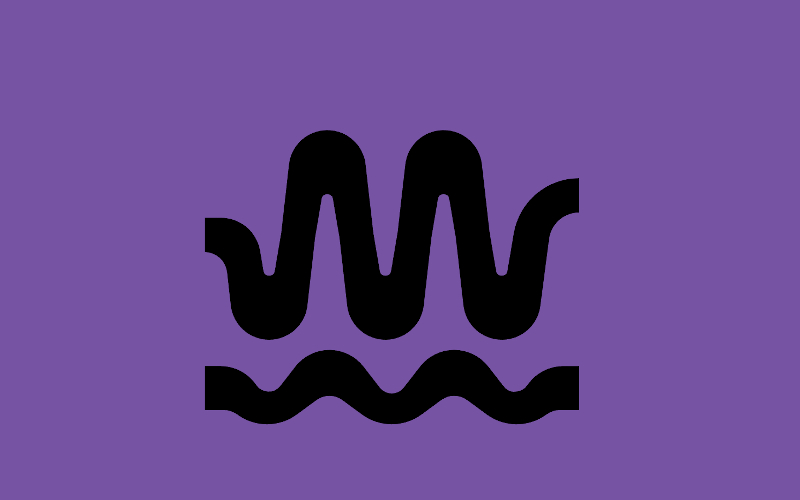






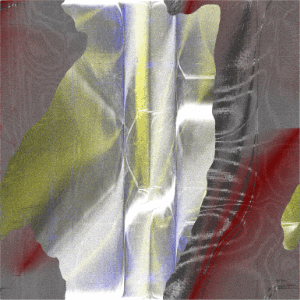


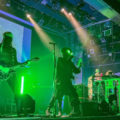
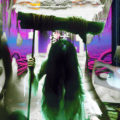



![Ndorfik & madebyitself :: Solos EP (People Can Listen) — [concise]](https://igloomag.com/wp/wp-content/uploads/2025/04/ndorfik-madebyitself-solos_feat-75x75.jpg)







